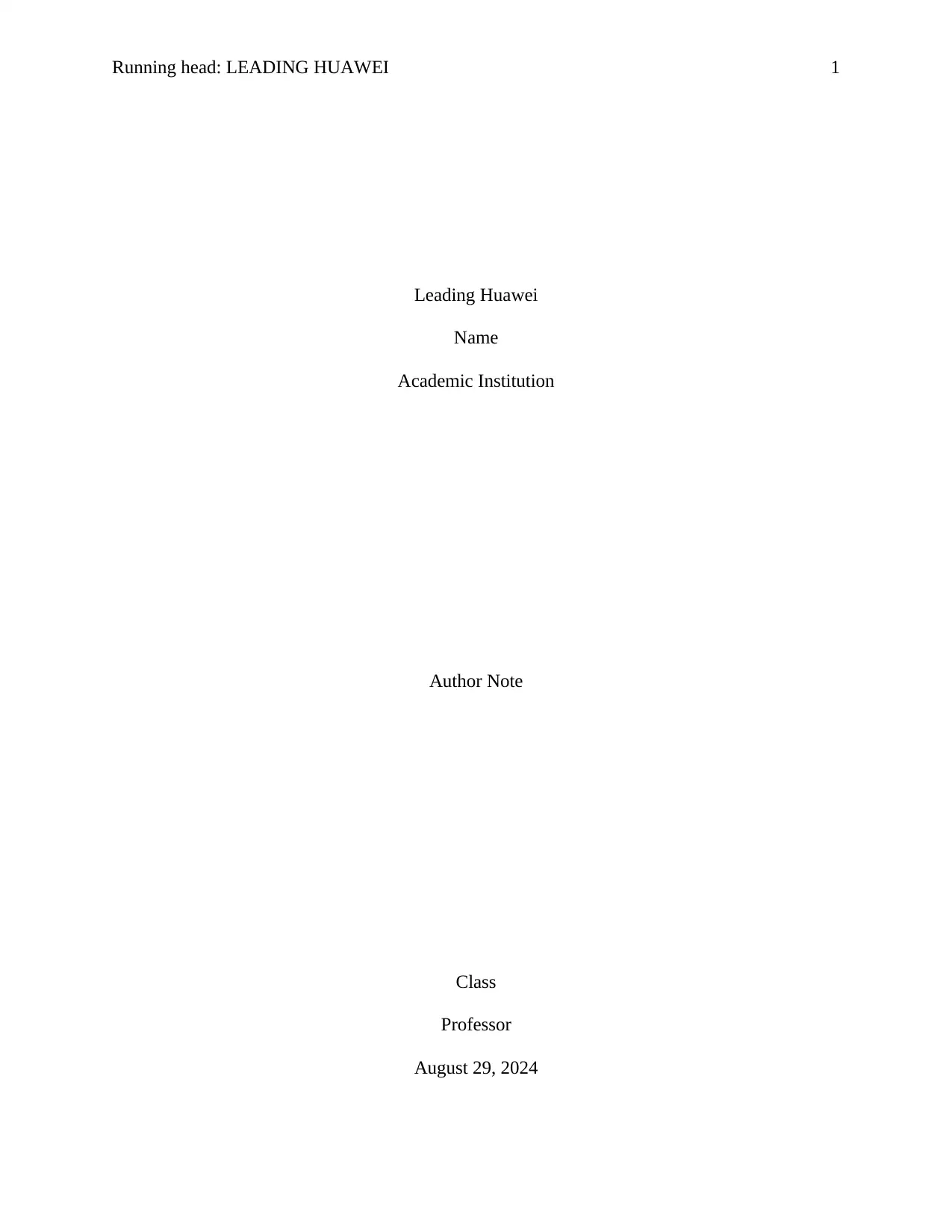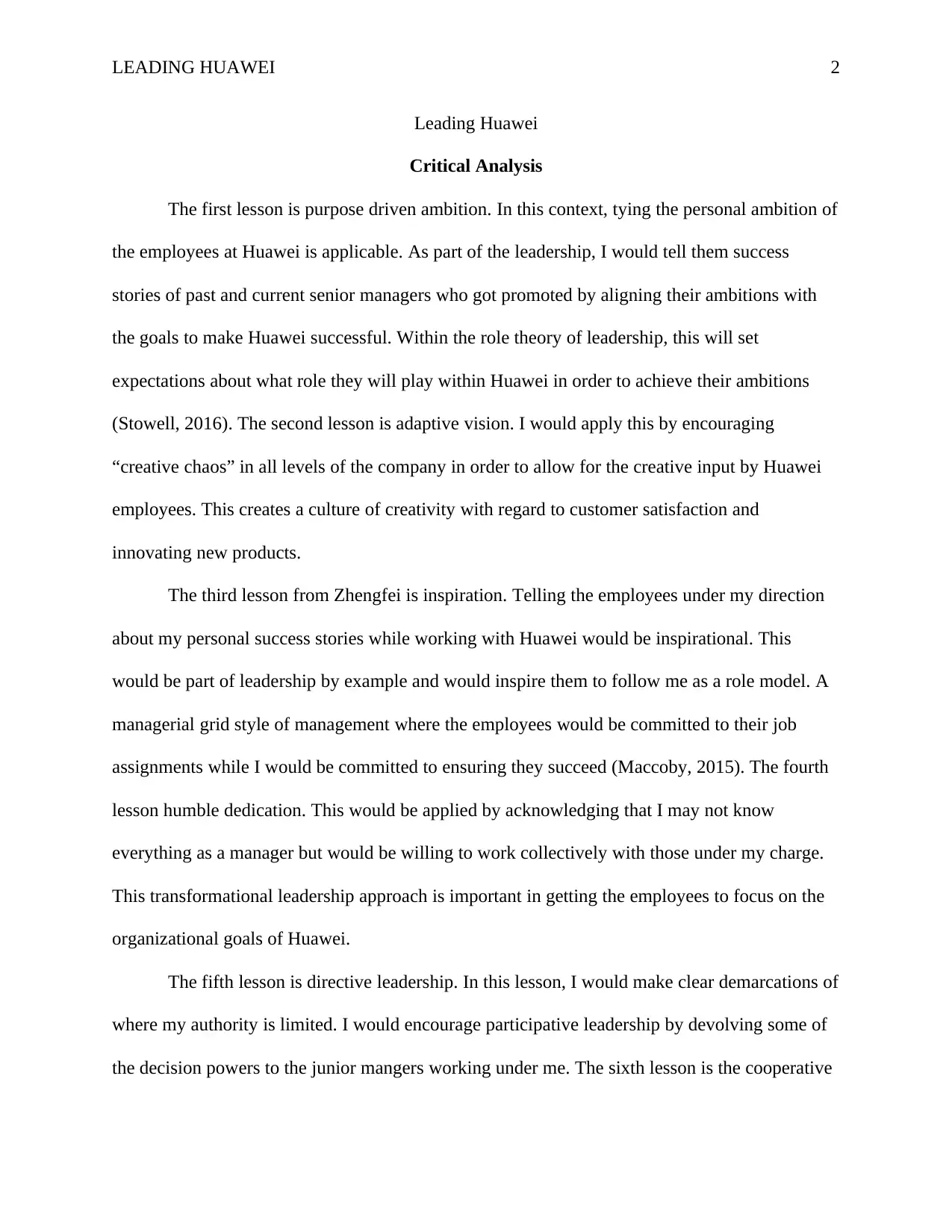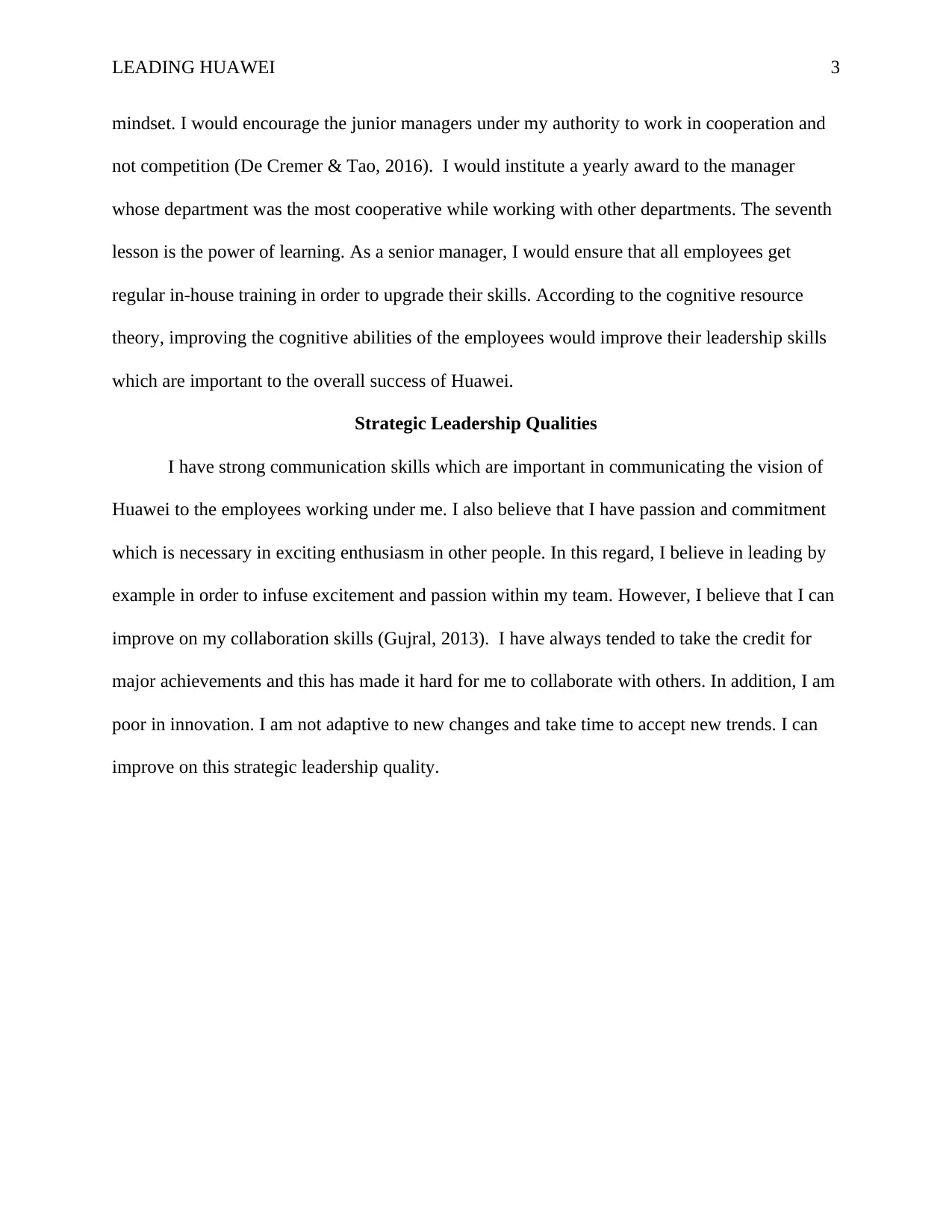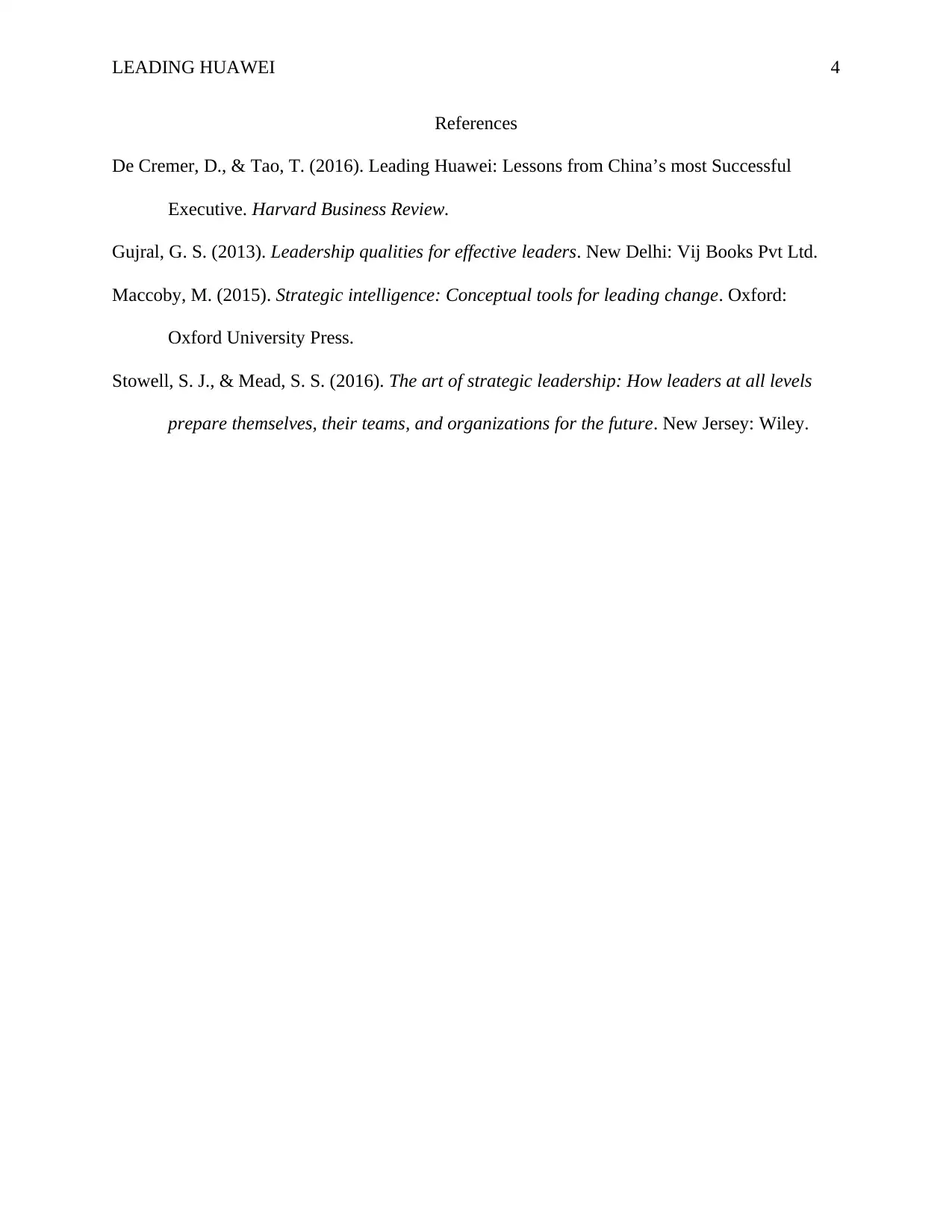Leading Huawei: Critical Analysis of Leadership & Application
VerifiedAdded on 2023/06/12
|4
|713
|251
Case Study
AI Summary
This case study critically analyzes the leadership strategies employed at Huawei, drawing lessons from Ren Zhengfei, a prominent Chinese executive. It explores how to apply purpose-driven ambition by aligning employee goals with Huawei's success, fostering adaptive vision through creative chaos, and inspiring employees through personal success stories and managerial commitment. The analysis also covers the importance of humble dedication, directive leadership with devolved decision-making, cooperative mindsets encouraged through awards, and continuous learning through in-house training to enhance employee skills. The author reflects on their strategic leadership qualities, highlighting strong communication and passion while acknowledging areas for improvement in collaboration and innovation.
1 out of 4











![[object Object]](/_next/static/media/star-bottom.7253800d.svg)